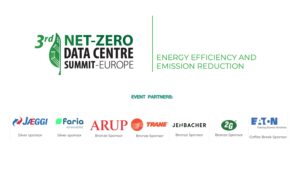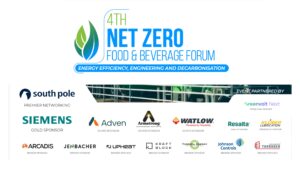AI agents in pharma are already inside validated manufacturing systems across the EU—not as analytics tools, but as autonomous monitors that detect drift long before it causes carbon surges. These agents don’t wait for a deviation. They recognize small but costly misalignments: an AHU pulling 12% more air to meet the same setpoint, a fill line drawing extra power because stopper torque wasn’t reset, or a revalidation protocol that never exited high-load mode.
Traditional BMS and EMS frameworks don’t flag these behaviors. They stay within tolerance, so teams miss the fact that emissions are growing under regulatory cover. And when energy usage rises in sterile zones without any mechanical or quality failures, the spike goes unchallenged.
This article identifies the exact operational failures that increase emissions without breaking compliance, then shows how AI agents in pharma surface these shifts, drive integration across GMP tools, and support real pharma emissions reduction at a systemic level.
Failure Modes in Pharma Operations That Lead to Emissions Spikes
Carbon inefficiencies in cleanrooms don’t show up in alarms. They appear in gradual power drift, prolonged environmental response, and systemic overcorrection. None of these disrupt GMP flow, which is why they often go uncorrected. This section maps the four most overlooked emission triggers in European sterile manufacturing:
CO₂ Intensity Spikes from Control Loop Drift in Cleanroom AHUs
Air handling units (AHUs) don’t fail outright. They shift. Even a 3% delay in damper return or a 0.2 m/s imbalance in supply pressure can cause the unit to overcompensate for every zone it supports. Over time, this triggers higher fan speed, longer chilled water duty cycles, and unnecessary static pressure increases—all to hit the same setpoint.
Facilities log performance as nominal because differential pressure holds, but the power curve climbs batch by batch. Process drift detection tools trained on AHU telemetry identify when the system begins drawing excess power to maintain baseline behavior. Once detected, the drift can be corrected before it affects Scope 2 totals or blows out energy-per-batch targets tied to pharma emissions reduction programs.
Energy-Weighted Variance in Multi-Product Fill-Finish Lines
Shared fill-finish lines rarely run with consistent power draw. Changes in vial diameter, fluid density, and stopper hardness all shift torque and dwell time across the system. Most facilities don’t adjust runtime or feeder speed per SKU—they rely on validated ranges that favor throughput over energy precision.
This creates wide variation in carbon intensity per unit filled. Batch‑to‑batch carbon variance ML modeling pharma EU uses real-time line-level power data matched with run formats to flag which product SKUs cause excessive load. With this visibility, engineers can redesign setup logic, modify start/stop cycles, or isolate mechanical components that need tuning. It eliminates silent power surges tied to packaging transitions.
Root Cause Links Between Sterile Downtime and HVAC Overuse
When aseptic zones go idle due to line stoppage, environmental systems remain fully active. If a fill line halts due to upstream batch delay or operator intervention, the HVAC system continues as if production is ongoing—often for hours. Air changes don’t throttle. Temperature control and pressure regulation persist at full load.
This mismatch causes unnecessary energy draw that is rarely investigated. AI agents in pharma compare MES event logs with HVAC runtime and identify gaps between downtime and environmental throttling. If the AHU stays on full power during non-productive periods, the agent flags a deviation between physical state and environmental logic. This provides a direct intervention point for AI-driven GxP maintenance scheduling.
Unexpected Revalidation Trigger Events That Drive Hidden Emissions
Revalidations are scheduled, but trigger conditions aren’t always visible. Events like unlogged maintenance, undocumented filter swaps, or unexpected EM spikes can force systems into post-validation logic without a clear record. This activates elevated airflow, tighter sampling intervals, and increased cooling load, sometimes for multiple batches.
Facilities may not even be aware that the system has entered a high-control state. However, AI agents in pharma detect when energy load increases without corresponding production or contamination drivers. They match HVAC and EMS response curves to historical patterns and flag when the system behaves as if under revalidation without justification. This protects against long-term carbon inflation hiding under false system states.
How AI Detects Drift Beyond Thresholds in GMP-Compliant Plants
Cleanroom emissions don’t spike randomly. They escalate because systems drift beyond their optimal states without ever leaving compliance. Traditional controls can’t see these shifts. However, AI models trained on high-frequency operational data can. This section outlines exactly how those models flag deviations that standard sensors and reports overlook, without breaking validation logic:
Drift Detection in AHU Output Load Curves Using Real-Time AI
Every AHU emits a unique load curve based on supply airflow, return resistance, and zone demand. When cleanroom density changes or process timing fluctuates, this curve shifts. Normally, BMS systems verify that pressure, temperature, and volume remain within tolerance. But AI doesn’t look for tolerance—it looks for pattern distortion.
Real-time agents compare current load curve trajectories against their historical behavior at similar ambient and production states. If power consumption rises while airflow remains static, the agent flags inefficiency. Because this drift still falls within the GMP range, it won’t trigger an alarm, but it creates a measurable footprint. By tying these curve changes to HVAC response logic, AI agents in pharma isolate the deviation and escalate it for early remediation. As a result, it maintains both operational stability and long-term pharma emissions reduction.
Machine Learning Models Trained on Batch-to-Batch Carbon Variance
Batch-level energy intensity in cleanrooms is rarely uniform. Even if product type stays constant, small shifts in stopper feed rate, vial prep timing, or dwell zone delays can change the energy curve. This variation is often ignored because it doesn’t affect sterility. AI treats it differently.
Using supervised models trained on historical power signatures across validated batches, agents track carbon variance over time. These models isolate patterns that consistently show elevated energy draw without corresponding process gain. The agents then flag them as performance drifts rather than acceptable fluctuation. This targeted analysis is critical for batch‑to‑batch carbon variance ML modeling pharma EU, which links operational behavior directly to emissions metrics—not just equipment specs or temperature readouts.
Identifying Cross-Zone Pressure Imbalances as Early Emissions Flags
In most GMP facilities, pressure cascade logic operates as a fixed rule. Higher-risk zones receive higher pressure. But when staff movement, product density, or environmental drift alters the dynamic, those rules no longer hold. Pressure sensors still report acceptable differentials, yet energy consumption surges due to airflow compensation.
Process drift detection algorithms now compare real-time differential data across adjacent cleanroom zones. When one unit works harder to sustain pressure that its neighbor can’t support, the AI flags a cross-zone imbalance. This imbalance creates hidden turbulence, longer fan duty cycles, and static pressure increases that raise emissions silently. The agent’s escalation alerts operators not only to the imbalance itself but to the mechanical stress driving carbon impact—well before HVAC logs show anomaly or load warnings.
Inferring Contamination-Linked Drift From Real-Time EM Sensor Noise
Microbial monitoring systems often record harmless signal variations—sensor spikes caused by vibration, environmental movement, or cleaning activity. On their own, these fluctuations are ignored. But when viewed as a sequence, they can indicate that environmental control systems are overcorrecting due to invisible disturbances.
AI agents in pharma analyze these EM sensor fluctuations at the edge, in real time, and correlate them with mechanical responses. If increased sensor noise corresponds with longer HVAC runtimes or added airflow redundancy, the system flags a drift that may relate to undetected contamination or imbalance. This allows early identification and links environmental activity to potential energy waste without crossing into false alarm territory. It also supports AI-driven GxP maintenance scheduling, since the drift can trigger targeted inspections before broader system impact occurs.
Engineering Integration of AI Agents in Pharma Into MES, EMS, and QMS
For AI drift detection to create operational value, its outputs must feed the core systems running validated environments. Anything less results in data that exists but doesn’t act. This section examines how engineering teams embed real-time AI signals into the decision infrastructure without creating compliance risk or loss of traceability:
Deploying AI at the Edge Under EU GMP Annex 22 AI Pharma Guidelines
Edge deployment allows agents to act before system inertia buries the drift. HVAC response time, SCADA input lag, and network latency make cloud-based models ineffective at catching sub-minute emissions shifts. Engineers now deploy local inference models on embedded modules installed directly at control panel nodes.
These agents operate within strict boundaries set by EU GMP Annex 22 AI pharma guidance: every prediction must be explainable, every learning update documented, and all data secure within local storage domains. By eliminating reliance on non-validated cloud platforms, facilities ensure that AI agents in pharma stay within the regulatory perimeter. At the same time, they retain the agility to monitor energy divergence from normal operating states—giving engineers drift visibility without breaking the validated state of the system.
Synchronizing Drift Flags Across MES, SCADA, and Environmental Logs
To take action, engineers must correlate energy signals with process context. A power spike means little without knowing what batch ran, which line operated, and how environmental controls responded. That’s why AI outputs must sync in real time across MES, SCADA, and EMS systems.
When AI agents in pharma detect a drift event, they push the timestamped anomaly into MES event logs, cross-referencing it with both SCADA electrical draw curves and ambient environmental traces. This three-way log merge makes every anomaly traceable, root-cause friendly, and usable for deviation reports. Facilities no longer rely on isolated alerts—they gain a timeline where production, power, and air behavior all align. That’s what makes AI actionable, not speculative.
Audit-Ready AI Drift Logs Mapped to EMA Validation Requirements
Most audit failures don’t result from wrong actions—they happen because systems lack evidence to show why they acted. To meet EMA scrutiny, AI drift logs must offer full visibility: inputs, decision structure, model versioning, user acknowledgments, and system response timestamps.
Modern plants now align their process drift detection logs directly with EMA Annex 11 and EU Annex 22 audit trails. Each flagged event is encoded with digital signatures, metadata lineage, and response actions. The logs integrate into the same frameworks used for CAPA closure and change control, which makes AI a contributing system within the quality management system—not a black-box observer. As regulators move toward AI transparency, this integration will determine which agents survive audits and which fail validation entirely.
Using Process Drift Data to Auto-Trigger GxP-Compliant Preventive Maintenance
GMP sites usually schedule preventive maintenance based on fixed intervals or historical failure patterns. This works until energy inefficiencies surface between those intervals. That’s where AI shifts the model. It doesn’t look for wear—it responds to deviation from normal operating efficiency.
With AI-driven GxP maintenance scheduling, agents monitor power draw, air delivery metrics, and runtime against their predicted baselines. When drift begins—even if the system still meets GMP tolerances—the AI tags the subsystem and issues a maintenance ticket through CMMS integration. Since the drift log meets documentation and traceability standards, QA teams can sign off without a separate investigation. This transforms maintenance from time-based to condition-triggered, driving both pharma emissions reduction and system reliability.
Carbon, Compliance, and ROI Outcomes of Drift Prevention
Drift prevention only matters if it drives measurable returns—on carbon performance, audit credibility, or financial risk exposure. Facilities can’t afford AI for its own sake. They need traceable data that defends ESG disclosures, tightens emissions baselines, and unlocks capital advantages. This section breaks down exactly how that payoff unfolds in GMP pharma:
Energy Savings Per Excursion Prevented: Data from EU-Based CDMOs
When cleanroom HVAC systems drift—even briefly—compressors overcorrect, recirculation fans spike, and power consumption rises sharply across filtration zones. These patterns go unnoticed until energy invoices show seasonal creep. However, with AI agents in pharma flagging excursions in real time, CDMOs now quantify the avoided overdraw per event.
In EU facilities, early intervention prevents multi-hour inefficiencies. Operators now log an average of 12.6 kWh avoided per flagged ISO 5 drift. This reduction, aggregated across dozens of events, translates directly to line-level emissions gains. Some EU-based sterile fill plants show monthly savings of 400–600 kWh on HVAC alone. This validates AI as a carbon-reduction mechanism; not through assumptions, but through clean, timestamped power data. Energy savings per batch EU CDMO metrics now drive both internal ROI reviews and GHG inventory improvements.
Mapping AI-Corrected Drift to GRI 302 and Scope 2 Metrics
Power reductions must pass audit, especially under GRI 302 and Scope 2 carbon protocols. AI systems now feed emissions calculations with log-level granularity, capturing the precise energy signature of each anomaly. Instead of vague efficiency estimates, teams show kilowatt-hour avoidance per tagged drift.
Facilities export these records into GRI-aligned disclosures. For Scope 2 mapping, AI systems identify the load draw, timestamp, zone, and response time—then link that profile to site-level procurement emissions factors. The key is traceability: teams now tie emissions variance to process drift detection events, rather than estimating facility averages. As more regulators push for method-level clarity, this approach hardens every Scope 2 claim with source data and timestamped AI response logs.
Linking Process Drift Prevention to CSRD Audit Defense Strategies
The CSRD forces ESG data into audit-grade terrain. What once passed as good intent now needs supporting controls. Facilities must not only report performance; they must show how that performance is measured, triggered, and managed under governance protocol. AI plays directly into that mandate.
Every drift flag is a system control instance. Logs include baseline thresholds, deviation magnitude, and corrective action taken. These aren’t just helpful; they become documentation for ESG auditors. By integrating AI-driven GxP maintenance scheduling into risk control systems, operators create a defensible trace of carbon-related intervention. This trail now supports CSRD disclosures across energy risk, emissions control, and internal process governance, turning drift flags into hard evidence.
How AI Drift Prevention Impacts Sustainability-Linked Loan Criteria
Loan covenants increasingly tie pharma financing to carbon performance. Especially in Europe, sustainability-linked loans depend on Scope 2 efficiency and audit-backed reductions. Here, AI isn’t just a reporting tool; it becomes the mechanism that keeps plants within their loan’s emissions tolerance.
Facilities use AI-driven GxP maintenance scheduling and emissions-linked detection to reduce the frequency and duration of drift-related overdraws. These savings then get reported quarterly to lenders. When linked to site-level carbon baselines, they influence borrowing margins, interest step-downs, or even ESG-linked eligibility. For CDMOs under high borrowing loads, AI-based drift control isn’t just compliance; it becomes capital leverage.
To Sum Up
AI agents in pharma are now driving more than detection; they’re becoming essential for proving carbon savings, securing ESG confidence, and aligning validated systems with real emissions performance. By flagging invisible drift, triggering early interventions, and logging exact energy avoidance, they turn data into both compliance and capital leverage.
To see these tools contextualized within a broader net-zero roadmap, join the 4th Annual Net-Zero Life Sciences Forum on 4–5 November 2025 in Düsseldorf, Germany. You’ll hear directly from pharma and medtech leaders on HVAC optimization, Scope 3 strategy, energy transition, AI-led sustainability, and regulatory alignment. Sessions also cover ESG monitoring, water efficiency, and circular economy pathways.
Seats are limited. Make the shift from energy insight to engineered action now!




